A clogged toilet can strike at the most inconvenient times, leaving you feeling frustrated and wondering how to remedy the situation without a plunger. Fortunately, there are several effective methods to tackle this common household dilemma. In this guide, we’ll explore tried-and-true techniques for unclogging a toilet without the aid of a plunger, using simple household items and a little know-how.
Assessing the Situation
Before diving into any unclogging methods, it’s crucial to assess the severity of the clog. Start by observing the water level in the toilet bowl. If the water is close to overflowing, refrain from flushing again, as this could worsen the situation.
Hot Water and Dish Soap Method:
- Start by pouring a generous amount of dish soap into the clogged toilet bowl. The soap acts as a lubricant and helps to break down any organic matter causing the blockage.
- Next, carefully pour hot (but not boiling) water into the toilet bowl from waist height. The hot water helps to soften the clog, making it easier to flush away.
- Let the mixture sit for a few minutes to allow the soap and hot water to work their magic, then attempt to flush the toilet. Repeat the process if necessary until the clog is cleared.
Baking Soda and Vinegar Solution:
- Mix equal parts baking soda and vinegar in a bowl to create a fizzy solution. The chemical reaction between the two ingredients can help break down stubborn clogs.
- Pour the mixture into the toilet bowl and let it sit for at least 30 minutes, allowing it to penetrate the clog.
- After the allotted time, flush the toilet to see if the clog has been cleared. If not, repeat the process or move on to another method.
Wire Hanger or Plumbing Snake:
- If the clog is caused by solid material or debris, a wire hanger or plumbing snake can be used to dislodge it.
- Straighten out a wire hanger and use it to gently prod and poke at the clog, being careful not to scratch the porcelain.
- Alternatively, a plumbing snake can be fed into the toilet drain and twisted to break apart the obstruction. This method may require a bit more finesse but can be highly effective for stubborn clogs.
Dishwashing Detergent and Hot Water:
- Similar to the hot water and dish soap method, dishwashing detergent can also be used to lubricate and break down clogs.
- Pour a generous amount of dishwashing detergent into the toilet bowl, followed by hot water. Allow the mixture to sit for a few minutes before attempting to flush.
- This method can be particularly effective for greasy or oily clogs, as the detergent helps to emulsify the fats and oils, allowing them to be flushed away more easily.
Plumbing Auger:
- For more serious clogs that cannot be resolved using the methods mentioned above, a plumbing auger, also known as a toilet auger, may be necessary.
- Insert the auger into the toilet drain and use the crank to extend the cable into the pipe. Once the auger reaches the obstruction, rotate it to break apart the clog.
- Slowly retract the auger, being careful not to damage the porcelain, and flush the toilet to ensure the clog has been cleared.
Prevention Tips
Prevention is always better than cure when it comes to clogged toilets. Here are some tips to keep your toilet running smoothly:
Watch What You Flush:
Avoid flushing items such as paper towels, feminine hygiene products, and excessive amounts of toilet paper, as these can contribute to clogs.
Plumbing Inspection:
If you experience frequent toilet clogs, consider having a professional plumber inspect your plumbing system for any underlying issues.
By following these preventive measures, you can minimize the risk of encountering a clogged toilet in the future.
FAQs Section
Yes, you can use boiling water to unclog your toilet. Boiling water can help dissolve any debris or blockages in the toilet pipes. However, it’s essential to be cautious when handling boiling water to avoid burns or scalds.
If the first method you tried doesn’t work, it’s advisable to wait at least 15 to 30 minutes before attempting another method. This allows time for the water and any cleaning agents to work on breaking down the clog. Rushing into another method too quickly may not give the initial method enough time to be effective.
Yes, there are some methods you should avoid when attempting to unclog a toilet. Avoid using sharp objects such as knives or wire coat hangers, as these can damage the toilet bowl or pipes. Additionally, refrain from using chemical drain cleaners, as they can be harmful to both your plumbing and the environment.
If you accidentally flush the toilet and it starts to overflow, don’t panic. Quickly reach behind the toilet and turn off the water supply valve located near the base of the toilet. This will stop the flow of water into the toilet bowl and prevent further overflow. Once the water has stopped, you can proceed with unclogging the toilet using one of the methods mentioned earlier.
If you suspect that there’s something stuck in the toilet, it’s best to avoid attempting to unclog it yourself. Using forceful methods such as plunging or using a plumbing snake can push the object further into the pipes, causing more damage and potentially leading to a more significant clog. Instead, consider contacting a professional plumber who can safely remove the obstruction without causing further harm to your plumbing system.
Conclusion
Dealing with a clogged toilet can be a stressful experience, but with the right tools and techniques, it doesn’t have to ruin your day. By using simple household items like dish soap, baking soda, vinegar, and hot water, along with a little elbow grease, you can effectively unclog a toilet without the need for a plunger. However, if the clog persists or if you’re uncomfortable attempting DIY methods, don’t hesitate to call a professional plumber for assistance. With these tips in mind, you’ll be equipped to handle any toilet-related mishap with confidence and ease.


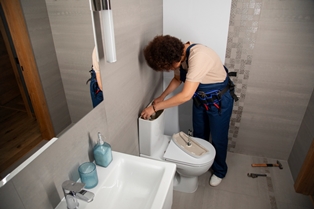



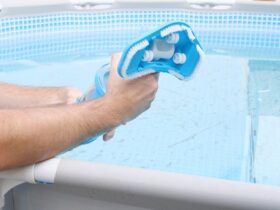

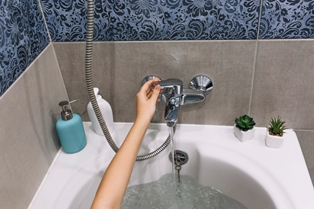
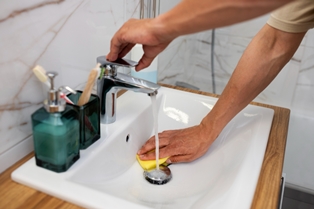

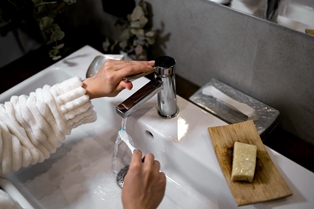
Find Us on Socials